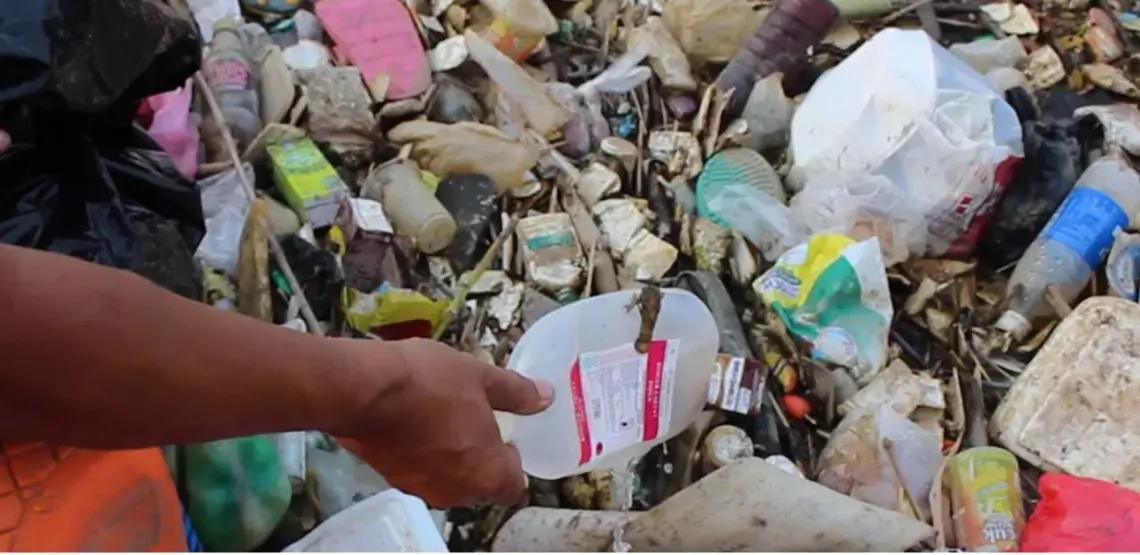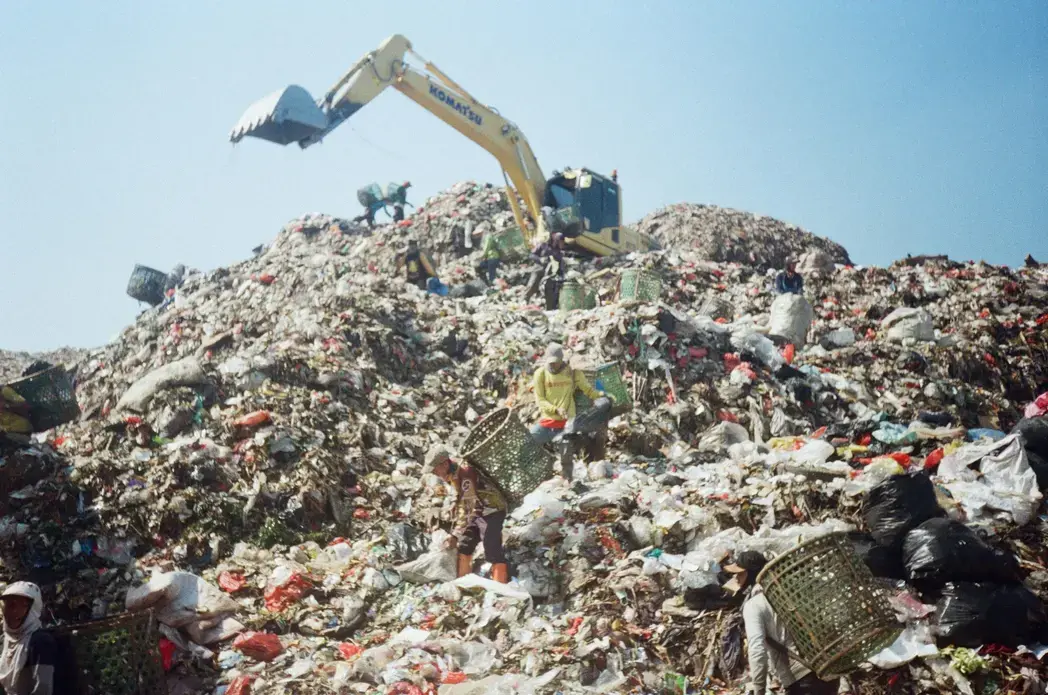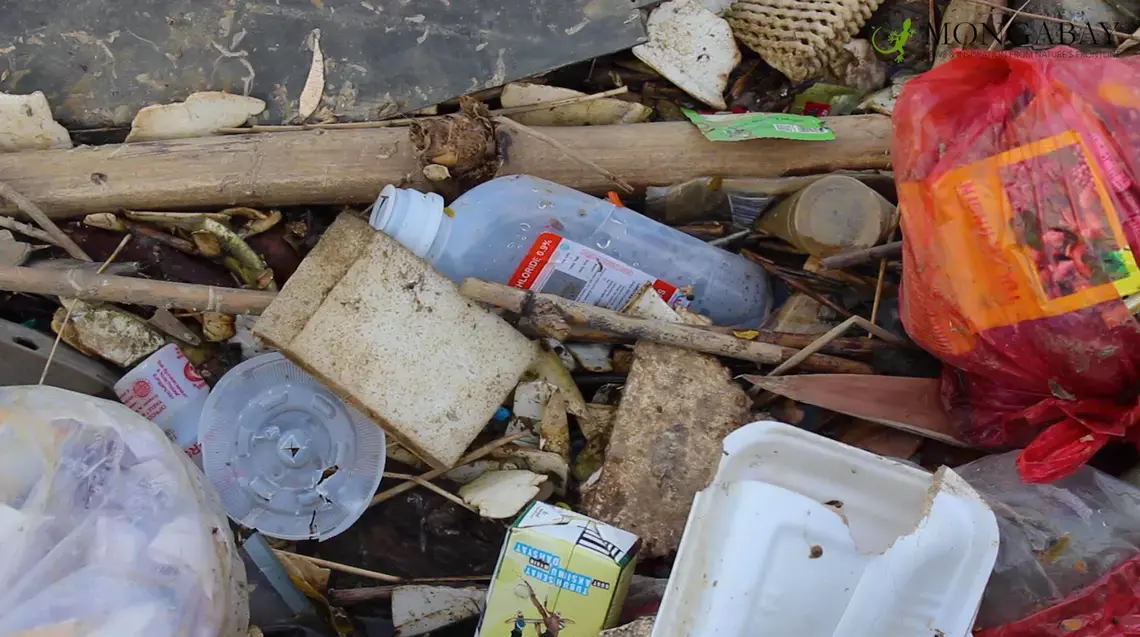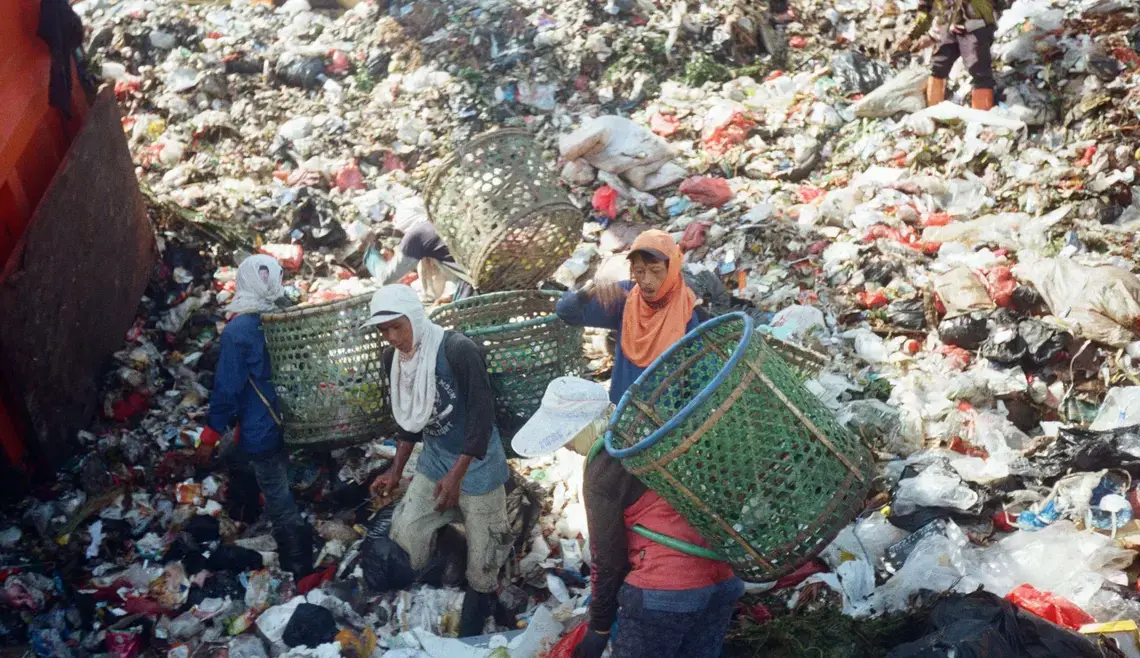Every day at 7:00am, Suranto would step out of his front door and put a large rattan basket on his back. His home was located just a few meters away from Bantar Gebang landfill in Bekasi, West Java, 30 kilometers east of the capital Jakarta. He has been a scavenger since 1991, picking up mostly plastic waste that he sold for IDR 2,000 ($0.1) per kilogram to garbage collectors.
One day in December 2015, after climbing a mountain of trash as high as 40 meters, Suranto picked up his steel hook from inside the basket and started to collect plastics.
His left hand would sometimes dig the trash. It was done as if automatically, without even pausing to check. Plastic waste was gold for him. On a good day he could bring home IDR 200,000 ($15).
After a few hours digging, he suddenly felt a burning sensation on his left hand, as if something was stinging. He saw a syringe hanging on the back of his hand. He pulled it off without any concerns and continued his search.
But it turned out it was a serious concern.
"Later that night I had high fever," Suranto told Mongabay. "The fever wouldn't disappear until a few days later. I didn't go to the doctor and just visited a shaman."
Working at Bantar Gebang is dangerous. Landslides could occur anytime, and vehicle-related accidents are frequently reported. Worse yet, scavengers deal with medical waste that was often found at Bantar Gebang landfill long before the pandemic. Face masks, infusion bags, tubes, syringes, and gloves were frequently found scattered across the 110-hectare landfill.
Medical waste from health facilities and households have created new problems. Lina Tri Mugi Astuti, secretary general of Indonesian Environmental Scientists Association (IESA), told an online discussion that Indonesia has 2,852 hospitals, 9,909 public health centers, and 8,841 health clinics. But less than 100 medical facilities that have their own medical waste treatments.
"Even before the pandemic we had problems with medical waste," Lina said.
As the recorded COVID-19 cases have reached more than 100,000, medical waste was predicted to increase five times prior to the pandemic or around 1,000 tons per day.
While the government has issued regulations and guidelines in handling the waste, some of the third-party waste management companies have often violated them.
An investigation by Tempo magazine in February 2019 found that some waste management companies dumped the waste in eight military bases in East Java. Later investigation also found that a hospital in Pasuruan, East Java, sold their medical waste to a recycling company.
Yet during the pandemic, medical waste has been found in landfills across Indonesia, such as Cipeucang landfill in Tangerang, Banten; Bantar Gebang and Sumur Batu landfill in Bekasi, West Java; and Surabaya, East Java. Some of the untreated medical waste would finally end up in Jakarta Bay.
The Director of Environmental Health at the Health Ministry Imran Agus Nurali admitted that his directorate does not have the authority to monitor every medical facility, saying that it is the responsibility of the Ministry of Environment. Yet his directorate also does not monitor every private waste management company.
"If there's a company that improperly disposed of biohazardous waste, we do not know," Nurali told Mongabay.
Dr. Mahesa Paranadipa Mikael from the Indonesian Law Health Society (MHKI) said that waste management is a long process that involves many people. Yet millions of households have also produced medical waste such as face masks. However, there is no sorting system that makes medical waste mixed with other types of waste.
"It can create new clusters," Mikael told Mongabay. "Because there are many people who collect the garbage at landfills. It's dangerous."
Mohamad Nasir, chairman of Indonesian Hospitals Association (PERSI), said that medical waste should be specifically treated. It should be disinfected before being incinerated. It should not be buried. However, there's no way for the government to monitor this.
"On-site treatment with incinerators is the best way because it can shorten the lifespan of the virus on the surface so it will reduce the risk of infections," he said.
A dumping operator at Bantar Gebang landfill, Ahmad Rospeli admitted that during the pandemic, he found medical waste mixed with other types of waste inside trucks. But he claimed that the operators would refuse to accept medical waste to be dumped inside Bantar Gebang.
"If we found medical waste inside garbage trucks we would check them," he told Mongabay. "Either we will send them back or bury them. It depends on the type of medical waste."
However when Mongabay visited the landfill, there was no checkpoint to examine the load. Most of the trucks would go directly to the dumping zones—there were five dumping zones in Bantar Gebang.
Riyadi, another garbage collector who lives near Bantar Gebang, told Mongabay that scavengers are prohibited to pick up medical waste that was buried.
"There is a specific zone designated for medical waste," Riyadi said, without explaining further. "Scavengers can't go there. Sometimes it was guarded by security personnel."
Bantar Gebang is said to be the largest landfill in the world established in 1986. More than 1,200 trucks from the capital dump their loads everyday. More than 7,000 tons of waste from Jakarta would be dumped on a daily basis. It is projected to overload in 2021.
The landfill lacks treatment facilities. It only has an incinerator with the capacity of 100 tons per day that rarely operates. With the volume of waste that enters Bantar Gebang everyday, they need at least 70 incinerators that operate 24/7 to eliminate the waste. With that said, thousands of scavengers that flocked the landfill have important roles in bringing the garbage from the landfill to the recycling companies, something that the operators failed to do.
Rospeli admitted that the operational cost of incinerator is high and that the landfill operators could not afford it. "But we are trying our best to optimize this," he said. "We know we still have much to do."
Before the government finds the solution to treat medical waste, many people around the landfills—including Suranto—will risk their lives while COVID-19 cases continue to rise.
To read the story in Indonesian, click here.
COVID-19 Update: The connection between local and global issues–the Pulitzer Center's long standing mantra–has, sadly, never been more evident. We are uniquely positioned to serve the journalists, news media organizations, schools, and universities we partner with by continuing to advance our core mission: enabling great journalism and education about underreported and systemic issues that resonate now–and continue to have relevance in times ahead. We believe that this is a moment for decisive action. Learn more about the steps we are taking.
















